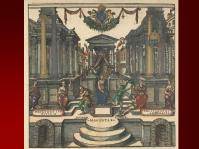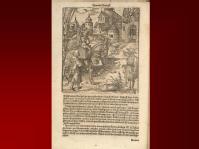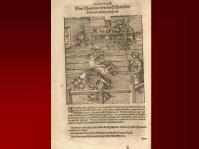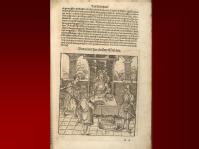How far are festival books authentic records of what went on?
Of course, we should not expect them to be accurate since publication (which was mostly after the event) gave their inventors the opportunity to spend several weeks (and sometimes months) polishing and shaping the record, inserting erudition, engravings or woodcuts. Essentially, Festival books are records of aspiration. Their images indicate what the spectator was supposed to see. The timescale for production of the actual event was often ridiculously short: at Narbonne in 1565, the citizens had thought the king would stay three or four days, but he decided to leave on the morrow and the decorations they had planned had to be put up in a few hours. Sometimes the projected monuments were not even put up at all, as Pierre Mathieu admitted for the entries into Lyons in 1595 and 1600, although he made sure that they were fully represented in prose and in image in the printed text.
In addition, narrators were not always confident that their words were adequate to express the precise form of the buildings which were erected, so they had recourse to illustrations as, for example, in Bouquet’s description of Charles IX’s entry into his capital city in 1571. At the summit of a vast perspective built in front of the Pont de Paris, was erected a double balustrade suggesting (from the ladies that could be seen there) that there was actually a pathway, whereas the effect had really been managed by skilful illusionist techniques.
The illustration (Illustration 35) shows the Pont de Paris in long perspective with the illusionist elements clearly depicted.

Illustration 35
We must not always believe what is said in Festival books. Let us take (as one example among many) the record of the festivities at Binche in 1549, where recourse to mysterious themes made up of myth, folklore and magic have long fascinated scholarly commentators. The future king of Spain, Philip II, on his way to his kingdom in the Netherlands, was entertained to several days of tournaments, feats of arms, adventures, ballets and banquets, all reminiscent of an earlier era when knights set out on their quest for the Golden Sword or the adventure of the Dark Castle, or when prince Philip sat alone at table enjoying his food.
Illustrations 36, 37 and 38 are woodcuts representing the three episodes of the Golden Sword, the Dark Castle and prince Philip alone at table.

Illustration 36

Illustration 37

Illustration 38
In fact, these woodcuts (and all the others in this record allegedly illustrating the Festival at Binche) are, in reality, Hans Schaufflein’s woodcuts for the Theuerdank - a magnificent volume commissioned by Maximilian I and published in 1517. In that book, the Emperor advertised his feats of arms and showed himself and his court engaged in splendid ceremonial; and it is he, Emperor Maximilian, who sits alone at table in the woodcut, and not prince Philip. But it is unlikely that many – if any – contemporaries were aware of this.
